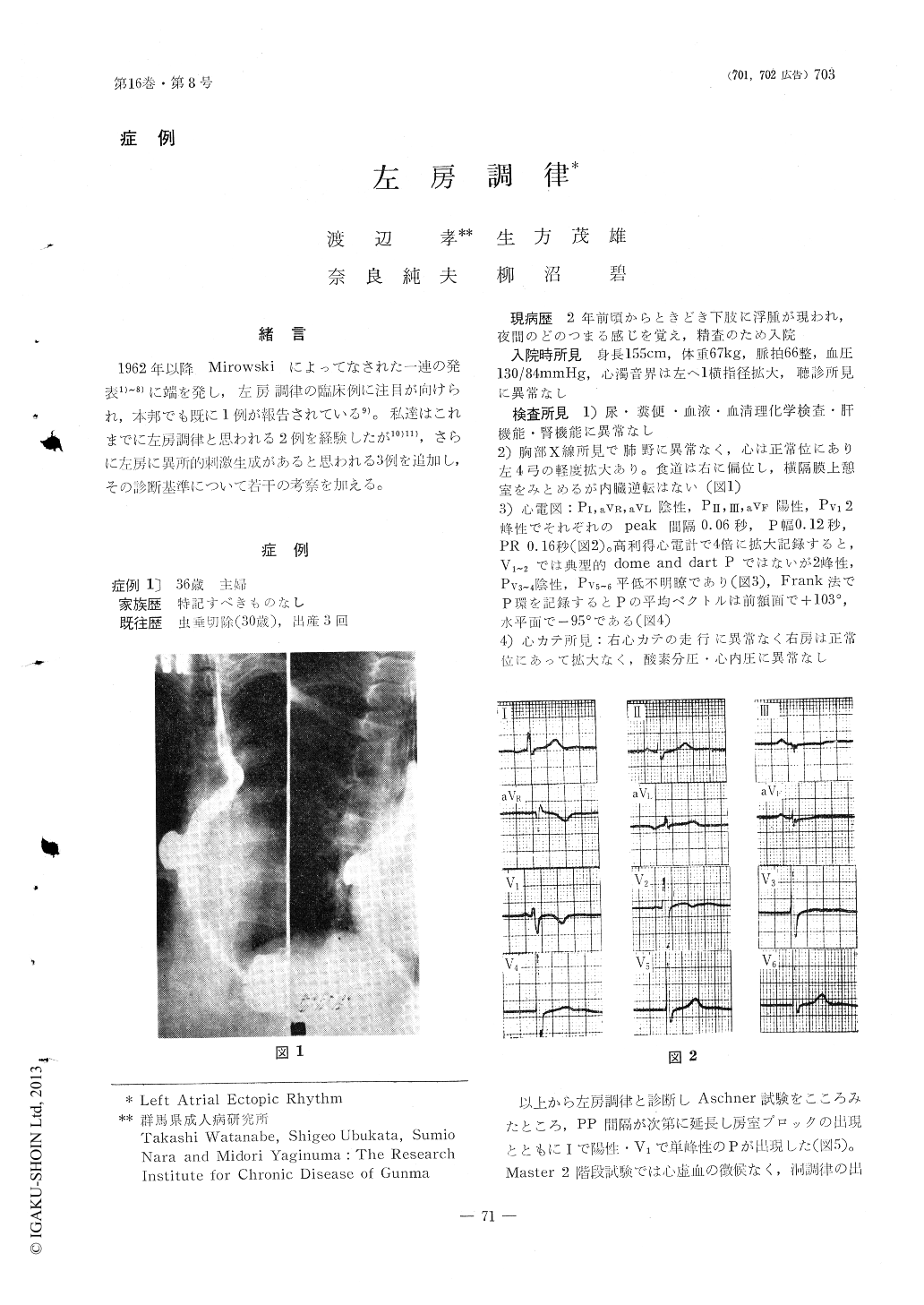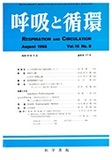Japanese
English
- 有料閲覧
- Abstract 文献概要
- 1ページ目 Look Inside
緒言
1962年以降 Mirowskiによってなされた一連の発表1)〜8)に端を発し,左房調律の臨床例に注目が向けられ,本邦でも既に1例が報告されている9)。私達はこれまでに左房調律と思われる2例を経験したが10)11),さらに左房に異所的刺激生成があると思われる3例を追加し,その診断基準について若干の考察を加える。
Since Mirowski's sequential reports start at 1962, clinicians begin to attend the clinical case of the left atrial rhythm.
Electrocardiographic findings such as ne-gative P wave in I or V6, or dome and dart P in V1, are considered the left atrial rhythm, however, the accurate diagnostic criteria for left atrial rhythm is, now, not always esta-blished exactly.
Recently, Mirowski claim that the negative P wave in V6 is the most reliable diagnostic finding, however, there are many cases showing positive P in V6 among not only his own cases but also our cases reported here. Our five cases of left atrial rhythm including one case of atrial flutter and two cases of supraventricular tachycardia all show the negative P wave in I. In the past, there are several cases of left atrial rhythm who showed positive P wave in I. Theoretically, P vector directed from the left to the right in frontal plane must be indicated as the negative P1 in the Einthoven's triangle, however in some cases, may be shown as the positive P1 in Burger's triangle.
On the other hand, it is impossible to di-stinguish such a case from coronary sinus rhythm to the left atrial rhythm without exact evidence that left atrium begin to activate at first and the right side secondary.
Several data on this problem reported in the literatures are reviewed and discussed.
The left atrial rhythm may be not able to diagnose when the P wave indicates positive in I. On the other side, such a conservative criteria, negative P1, may overlook the cases of false negative, however, it must be the limit of routine electrocardiographic diagnosis.

Copyright © 1968, Igaku-Shoin Ltd. All rights reserved.


